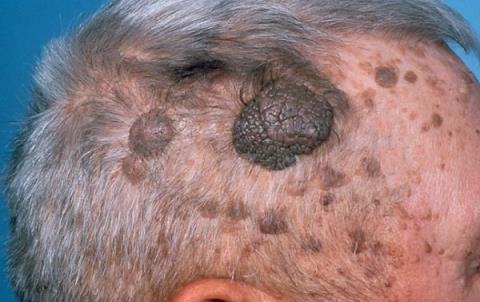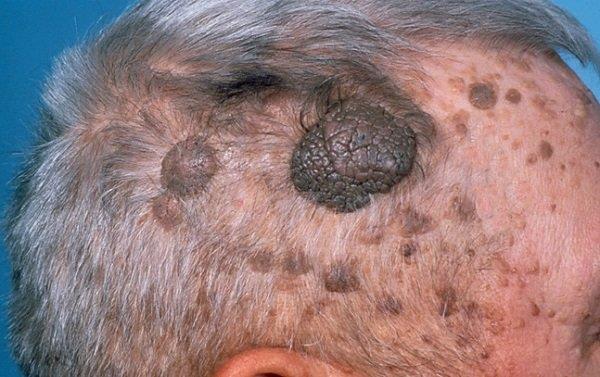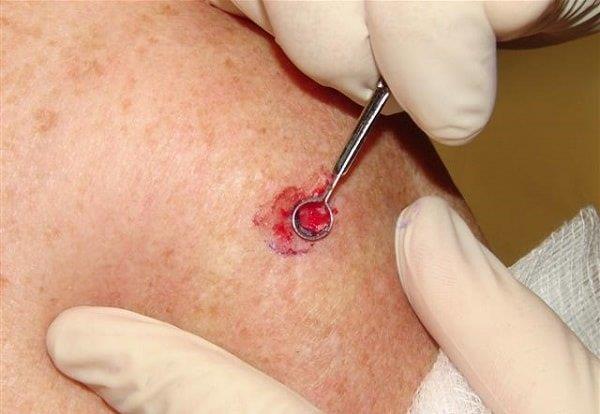What is seborrheic keratosis?

Seborrheic keratosis is a type of skin growth. It is the most common type of benign skin tumor. The incidence of the disease increases with age. The incidence is less in people with darker skin. They can be unsightly, but their growth is not harmful. They are benign skin tumors that originate in cells in the outer layer of the skin. Like liver nodules, seborrheic keratosis is more commonly seen as people age. In some cases, seborrheic keratosis can be difficult to distinguish from melanoma, a very serious type of skin cancer.
content
- 1. Pictures of seborrheic keratosis
- 2. Who is at risk?
- 3. When to see a doctor
- 4. Diagnosis
- 5. Methods of disease treatment
- 6. Method to remove them
- 7. Home Remedies
1. Pictures of seborrheic keratosis
1.1. Seborrheic keratosis location
Multiple lesions may be present, although there may be only one at first. Growths can be found on many areas of the body, including: scalp, face, shoulders, chest, abdomen.
Growths can be found anywhere on the body except the soles of the feet or palms.
1.2. Seborrheic keratosis texture
Growth often begins in small, rough areas. Over time, they tend to develop a thick, wart-like surface. They can also look waxy and have a slightly raised surface.
1.3. Seborrheic keratosis shape
They are usually round or oval, flat or slightly raised, resembling a scab from a healing wound, and range in size from very small to more than 2.5 cm.
1.4. Color
They are usually brown, but can also be yellow, white, or black.
2. Who is at risk?
Risk factors for this condition include:
- Aging: The condition usually develops in middle-aged people. The risk increases with age.

Illustration
- Family members with seborrheic keratosis: This skin condition often runs in families. The risk increases with the number of relatives affected. Scientists have suggested that a genetic mutation may be to blame.
- Regular exposure to the sun

Illustration
There is some evidence that skin exposed to the sun regularly is more likely to develop seborrheic keratosis. However, the condition also appears on skin that is normally covered when people go outdoors.
In addition, seborrheic keratosis is not thought to be associated with any viral infections. Skin friction can be a factor, as they often appear in the folds of the skin.
3. When to see a doctor
Seborrheic keratosis is not dangerous, but you should not ignore the abnormal patches that develop on the skin. It can be difficult to distinguish between harmless and dangerous conditions. Some growths are suspicious for malignancy as they are irregular in color, such as purple, blue, or red-black, have irregular borders (opaque or jagged), and are painful.
4. Diagnosis
Dermatologists can usually diagnose seborrheic keratosis by sight. If there's any uncertainty, they'll likely remove some or all of them for lab testing. This is called a skin biopsy.

Illustration
The post-biopsy image will be examined under a microscope by a pathologist. This can help your doctor diagnose this growth as seborrheic keratosis or cancer (such as malignant melanoma).
5. Methods of disease treatment
In many cases, seborrheic keratosis does not require treatment. However, your doctor can remove any keratosis patches that appear suspicious or cause physical or emotional discomfort.
6. Method to remove them
The three commonly used removal methods are:
- Cryosurgery, which uses liquid nitrogen to freeze growths.
- Electrosurgery, which uses an electric current to remove growths.
- Scrape, using a spoon-like surgical instrument to remove the growth. It is sometimes used with electrosurgery.
After removal, your skin may be brighter at the removal site. The difference in skin color is usually less noticeable over time. Most cases of seborrheic keratosis will not return but may develop a new mass on another part of the body.
7. Home Remedies
There is no proven home remedy for seborrheic keratosis. Lemon juice or vinegar can be irritating, which can cause the wound to dry out and crack, but there's no evidence that this is safe or effective.
Certain substances, such as tea tree oil, can trigger allergic contact dermatitis, an immune system response that causes itching and inflammation around the site.
In summary, seborrheic keratosis is a benign disease of the skin. However, if you have unusual symptoms and to make sure they are not some form of skin cancer, see your doctor for a careful examination. The above article hopes to give you useful knowledge about seborrheic keratosis
Doctor: Hoang Viet Trinh